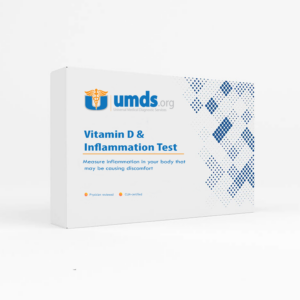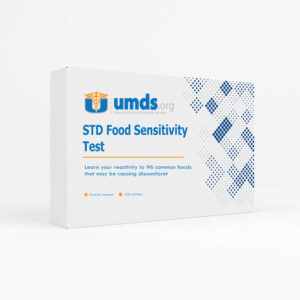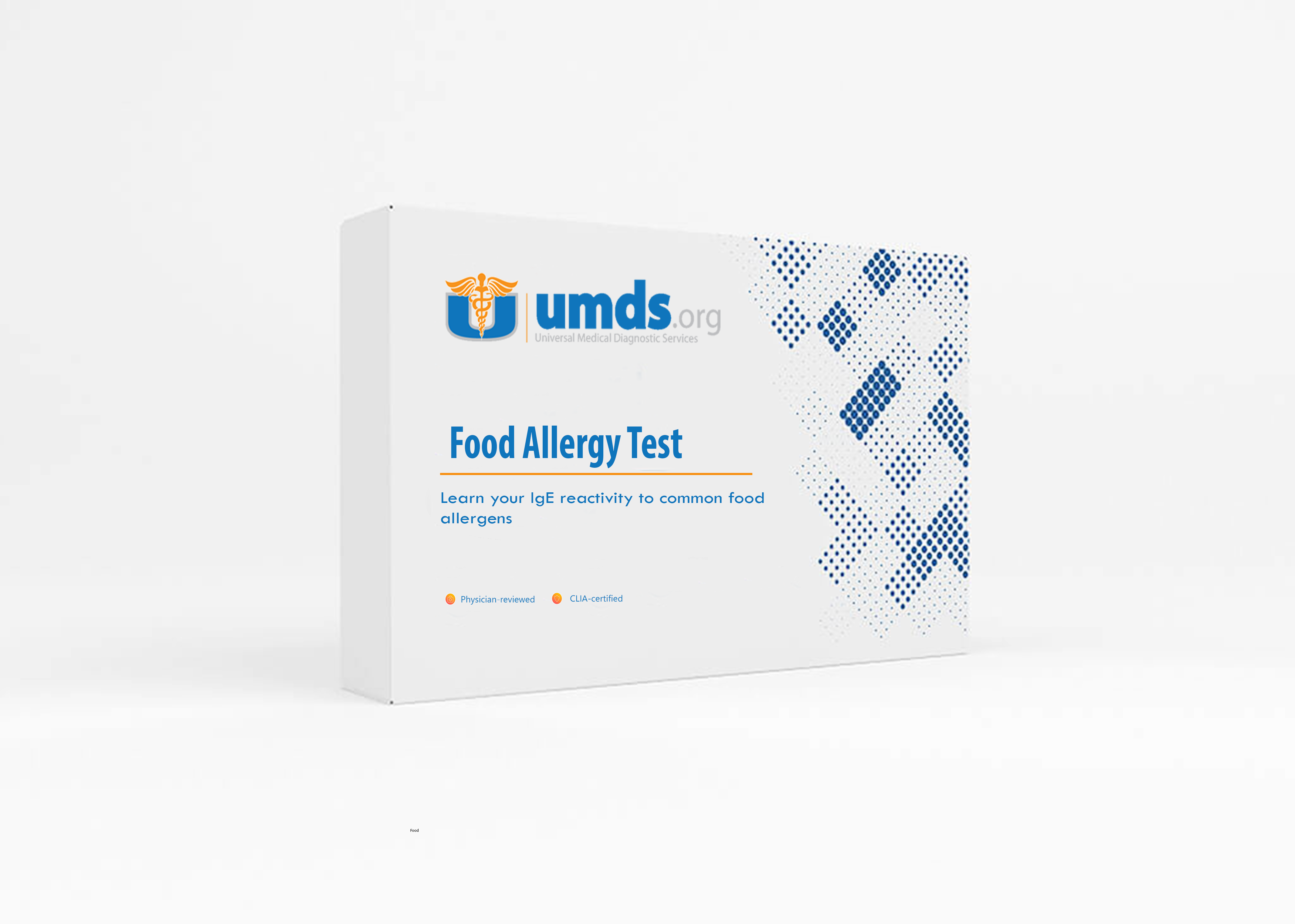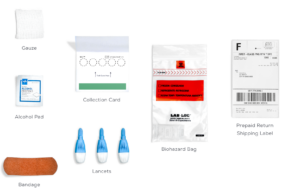Food Allergy test
$149.00
Discover your food sensitivities with our Food Allergy Test
- 4.83
112 Reviews
Our at-home test identifies potential food allergies by measuring your body’s IgE levels to common allergens. If your results indicate elevated IgE levels, our team will reach out to discuss next steps.
- IgE reactivity to 9 foods
- Sample using a finger prick
Our test identifies IgE antibodies linked to nine common food allergens. IgE antibodies are typically present in small amounts but can surge when your immune system overreacts to a food allergen. We screen for potential allergies to almonds, cow’s milk, egg white, egg yolk, peanuts, shrimp, soy, tuna, and wheat.
This test is suitable for individuals experiencing mild allergy-like symptoms without a confirmed food allergy diagnosis. Additionally, those with a family history of allergies might benefit from this test.
When This Test Might Not Be Appropriate
If you’ve had severe allergic reactions to any of the tested food allergens, or if you’re uncertain about an existing food allergy, this test is not recommended. Importantly, this test should never replace professional medical advice or be used for food challenges without healthcare supervision.
Understanding Your Results
A food allergy diagnosis requires more than just test results. Your healthcare provider will consider your symptoms, medical history, family history, and physical exam to determine the likelihood of a food allergy. This test is a tool to aid in the diagnostic process, not a definitive diagnosis.
Allergy Symptoms
Mild Symptoms:
Facial, lip, mouth, tongue, or throat tingling or itching
Itchy or watery eyes
Hives, skin rash, or itchiness
Runny nose, sneezing, congestion
Stomach pain, nausea, vomiting, constipation, or diarrhea
Severe Symptoms:
Difficulty breathing, wheezing, chest tightness
Swollen lips, tongue, or throat
Rapid heart rate, dizziness, lightheadedness, or fainting
If you experience severe symptoms, seek immediate medical attention.
For individuals with a history of severe food allergies or uncertainty about current allergy status, consulting with a healthcare provider is essential for proper evaluation and guidance
Convenient at-home testing. Your kit includes everything you need to collect your sample and ship it back to us with prepaid shipping. Easy-to-follow instructions and a helpful video guide the process. Our support team is here to assist you. Receive your results digitally or in print, and access informative educational videos presented by healthcare professionals.
HOW IT WORKS
01:
Get Started with Your Test
When your test arrives, visit UM Diagnostics and scan the QR code on the box to easily enter your test ID.

02:
Test conveniently at home
When you’re ready, follow the kit’s instructions to collect your sample and mail it using the prepaid shipping label.

03:
Receive results within 24 hours
Your physician-reviewed results will be available in your account within a few days.

04:
Wellness is a team effort
We’ll provide personalized lifestyle insights and guidance based on your results to help you make healthier choices.

FAQ'S
FREQUENTLY ASKED QUESTIONS
Food allergies can range from mild to severe. Mild reactions may cause itching, hives, or digestive upset. However, some people experience a severe allergic reaction called anaphylaxis, which is a medical emergency.
Symptoms of a mild allergic reaction include:
- Itching or tingling in the mouth, throat, or face
- Watery eyes
- Hives
- Runny nose
- Stomach upset
- Severe allergic reactions (anaphylaxis) can cause:
Difficulty breathing or wheezing
Swelling of the lips, tongue, or throat
Rapid heart rate
Dizziness or fainting
This test might be right for you if you’ve experienced unexplained symptoms after eating or have a family history of allergies.
Food allergies can be severe and even life-threatening. This test is not suitable for individuals with a history of severe allergic reactions to the tested foods or those seeking to confirm an existing food allergy. Under no circumstances should this test be used for food trials without medical supervision.
Severe allergic reactions may include:
- Difficulty breathing, wheezing, chest tightness
Swelling of lips, tongue, or throat - Rapid heart rate, dizziness, or fainting
- Requiring an epinephrine injection after consuming the allergen
If you have a history of severe food allergies or uncertainty about your allergy status, consult with your healthcare provider. They can assess your symptoms and develop a personalized care plan.
This test measures the level of immunoglobulin E (IgE) antibodies in your blood. IgE antibodies are involved in allergic reactions. When you have a food allergy, your immune system overreacts to certain foods, producing excess IgE. This triggers the release of histamine, causing allergy symptoms.
While IgE is normally present in small amounts, elevated levels can indicate an allergic response. The most common food allergens causing allergies include:
- Eggs
- Fish (such as tuna, halibut, or salmon)
- Milk and dairy
- Peanuts
- Shellfish (such as shrimp, lobster, or crab)
- Soy
- Tree nuts (such as almonds, cashews, or walnuts)
- Wheat
Your test results will indicate the level of IgE antibodies present for the foods you were tested for. It’s important to understand that these results alone do not confirm a food allergy diagnosis. To accurately diagnose a food allergy, you should consult with a healthcare provider or allergy specialist. They will consider your test results in conjunction with your medical history, symptoms, and other relevant factors. Only then can a proper diagnosis be made and a personalized treatment plan developed.
Related products
-

Vitamin D + Inflammation Test
$99.00 -

STD Food Sensitivity Test
$199.00 -

Metabolism Test
$99.00
Disclaimer: These statements have not been evaluated by the Food and Drug Administration. This product is not intended to diagnose, treat, cure, or prevent any disease At Um Diagnostics, we provide health and wellness solutions, including laboratory testing for wellness monitoring, informational, and educational purposes. Please note that, with the exception of specific diagnostic test panels (listed here), our tests are not designed to diagnose or treat medical conditions. They should not replace professional medical advice, diagnosis, or treatment. Additionally, due to regulatory restrictions, our tests are currently unavailable in NY.
Copyright © 2024 – umds.org – All Rights Reserved



